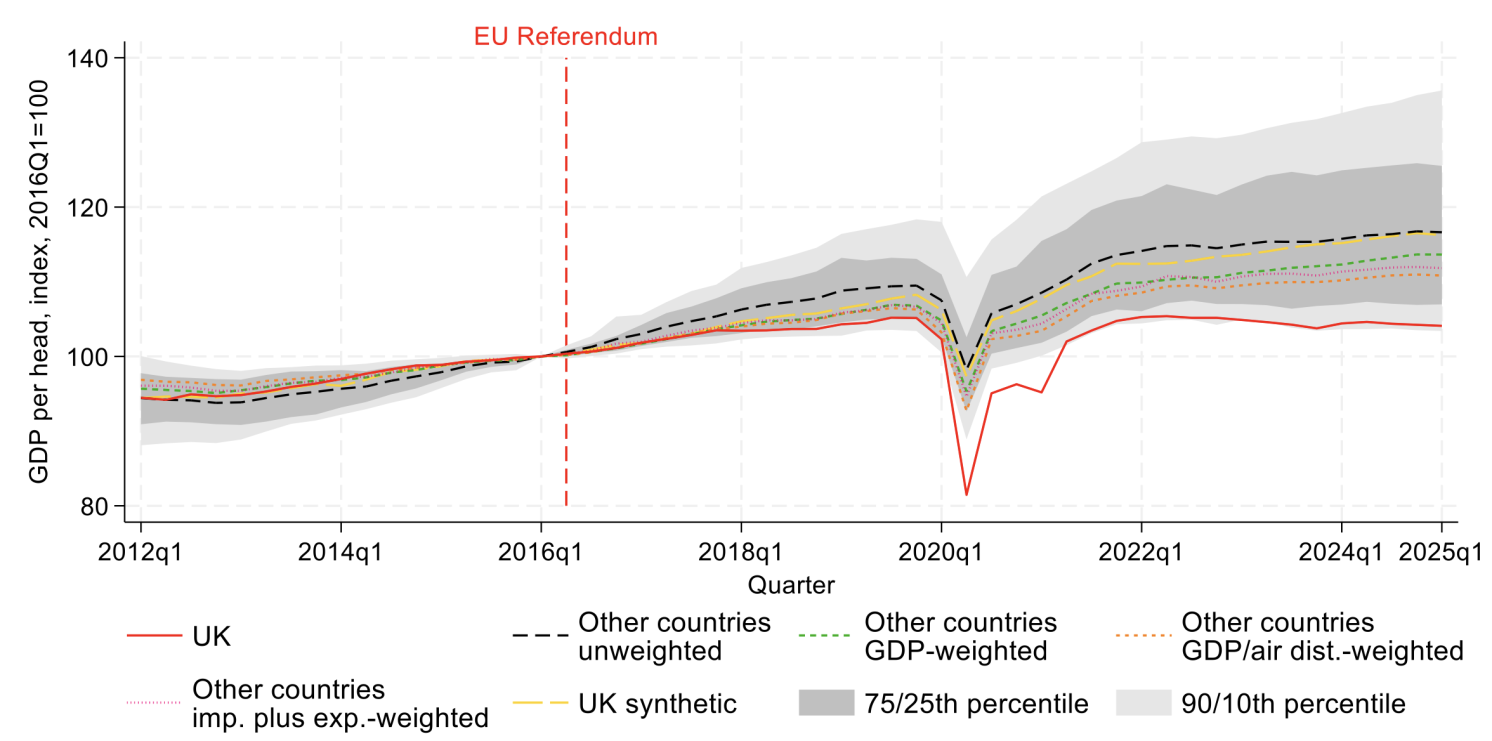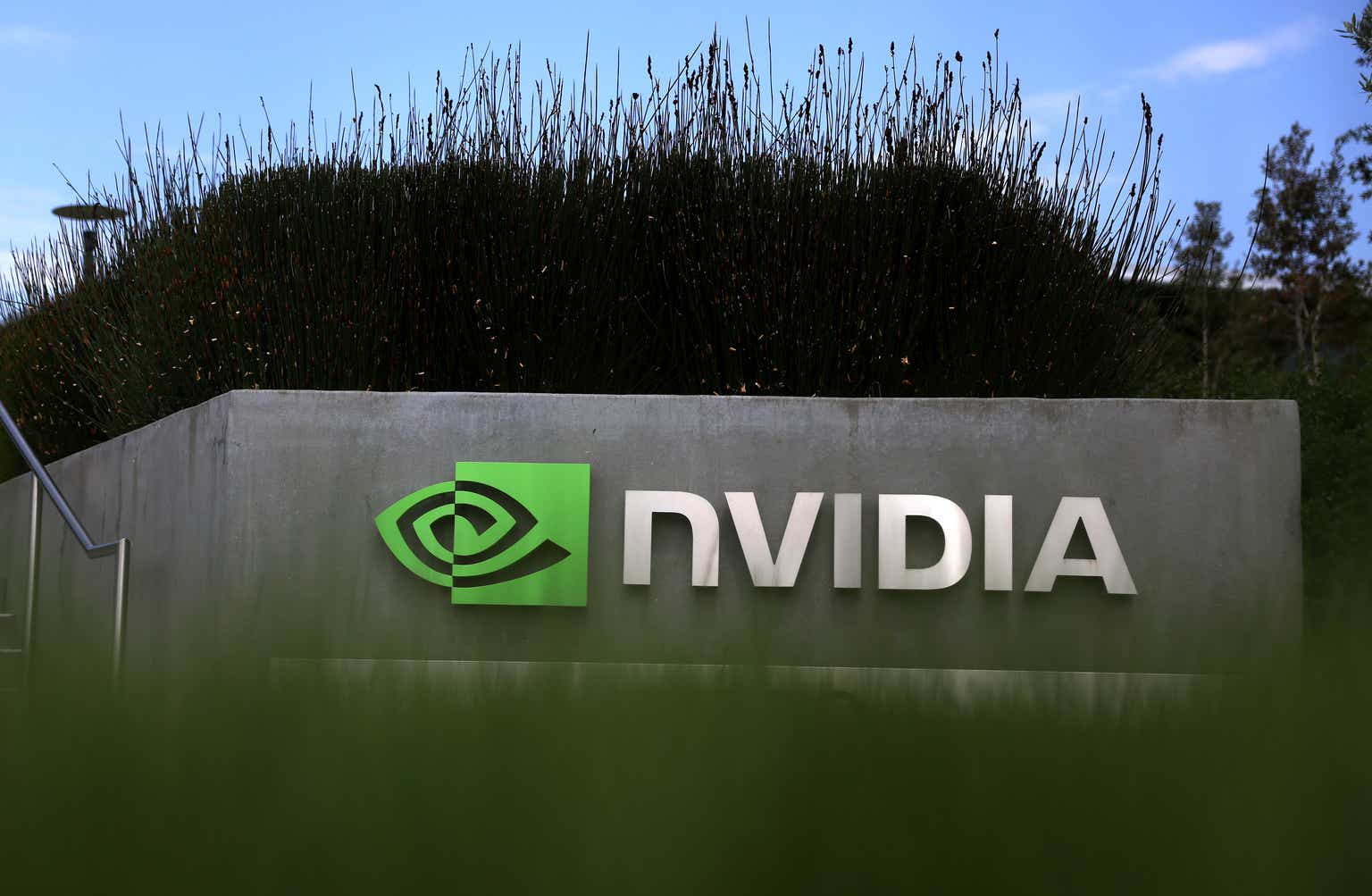Justin Sullivan
Systematic vs. Firm-specific
The broad stock market, as proxied by the S&P 500 (SP500) is affected by two forces.
First, there is the systematic risk, as related to the business cycle (growth, unemployment, inflation), which is generally managed by the Fed.
Second, there are firm-specific or industry-specific events that generally affect only a few stocks, and if these are large stocks heavily weighted in the broad market, the influence could be significant on other (fundamentally unaffected) stocks via sentiment. More importantly, the firm-specific events can work against the systematic events (the first variable) and distort the efficient market pricing.
The recent correction attempts denied
In fact, that’s exactly what’s currently happening in the markets. As I will explain in more detail, the macro environment based on systematic events is negative for the stock market, which calls for a significant correction in S&P 500.
However, the GenAI-theme (industry-specific) keeps pushing the market higher via the few affected stocks, which are heavily weighted in the S&P 500, most notably NVIDIA (NVDA) and Meta (META).
First, the S&P 500 attempted to correct after the hawkish Fed meeting (systematic event) on January 31st, but the correction was denied by the 20%+ spike in Meta (the GenAI theme) the following day after the Meta earnings report. Meta is currently the 6th largest stock in the S&P 500 (SPY).
Second, the S&P 500 attempted to correct again on Feb 13th and Feb 16th after the “hot” CPI and PPI inflation reports (systematic events) but again the correction was denied due to the anticipation of the Nvidia earnings.
Finally, after a 2.5% dip, the S&P 500 reached the new all-time high after Nvidia reported earnings on Feb 21st, as the Nvidia stock price spiked by 16-17%. Note, Nvidia is currently the 3rd largest stock in the S&P 500 with almost 5% weight.
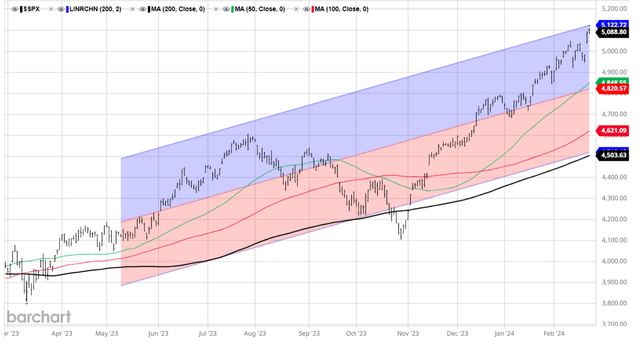
Barchart
The macro situation calls for a sharp correction
Broadly, the economy is facing an inverted yield curve (high probability of a recession) and the maturity wall of refinancing in 2025 (high probability of a credit crunch).
The macro situation (systematic risk) over the near term is also very negative – it calls for a sharp correction in the S&P 500.
The S&P 500 chart above shows almost a parabolic rise since late October 2023, where the S&P 500 posted a historical streak of 14 weeks up in 15, which currently stands as 15 weeks up out of last 17 – still historic. So, what was the trigger for this rally?
The Fed made a dovish turn at the December meeting, which was signaled earlier in October. Specifically, the Fed abandoned the “higher-for-longer” policy and signaled 3 interest rate cuts in 2024.
The market interpreted this dovish turn as the Fed’s resolve to avoid the recession in 2024 and sharply reduce the interest rates ahead of the “maturity wall” in 2025, and thus priced 6-7 interest rate cuts in 2024.
This market reaction to the Fed’s dovish pivot caused the significant loosening of financial conditions, with falling short-term and long-term interest rates, and a weakening US Dollar, in addition to the soaring stock market.
However, the key assumption was that inflation would fall quickly and allow the Fed to cut interest rates. Unfortunately, it appears that the disinflationary process is stalling at a level above 3% (based on January core CPI), and inflation is possibly rising based on some key measures, such as sticky inflation less shelter.
Thus, the Fed has been trying to walk back the dovish turn from December, and ruled out interest rate cuts over the near term at the January meeting.
Accordingly, the market has repriced the Fed’s policy path for 2024 from 3.7% expected Federal Funds rate by December 2024 on January 12th to currently 4.6%, which is exactly what the Fed signaled in December. The chart below shows the December Federal Funds futures, sitting exactly at 4.6% implied Federal Funds rate (95.4 price).
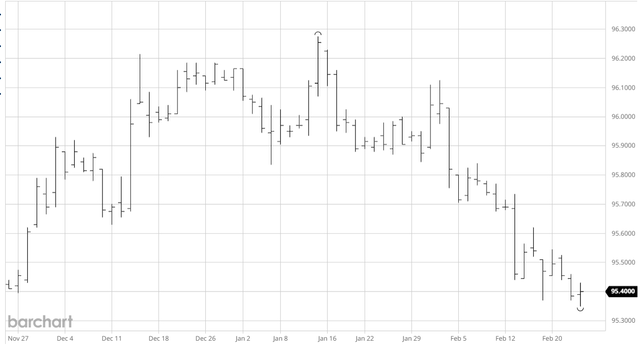
Dec FF futures (Barchart)
Accordingly, the 2Y Treasury Note yield increased to 4.70%, (US2Y) (SHY) the 10Y Treasury Note yield (US10Y) (TLT) increased to 4.3% with the real yields rising to 2%, and the US Dollar (UUP) broadly strengthened. The financial conditions tightened. Even the economically sensitive small stocks index Russell 2000 (IWM) peaked in December, and is currently still down YTD.
Yet, the broad stock market index remains defiant and keeps climbing – led by the firm-specific factors and a few megacap tech stocks, most notably Nvidia.
The Nvidia melt-up
Here is the chart of Nvidia stock that tells it all – the spike from 500 to 800 is over the last 7 weeks YTD in 2024. This is the 3rd largest stock in the S&P 500.
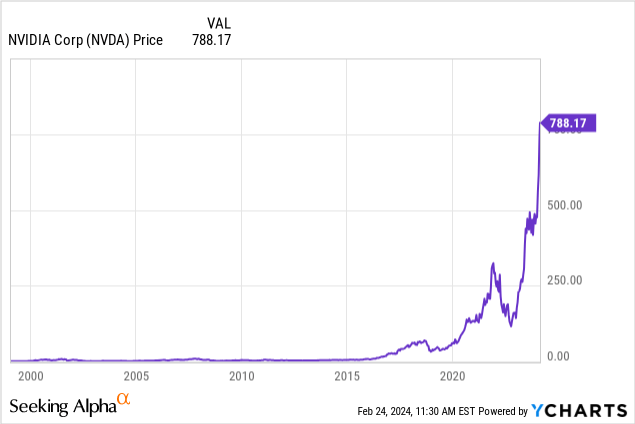
So, what’s driving Nvidia higher?
The chart above reflects a temporary shortage of chips for GenAI computing. The trend was triggered by Microsoft’s (MSFT) investment in OpenAI and ChatGPT GenAI technology in January 2023. This event caused a rush of investment into the GenAI technology by large tech firms like Amazon (AMZN), Meta, Tesla (TSLA), and Alphabet (GOOG).
However, Nvidia seems to be currently the only chip producer able to supply the GenAI-enabling chips, with around 90% market share. Thus, it’s obvious Nvidia had a meteoric rise in revenues and profits over the last year.
But also, obviously, this is a temporary situation as the other chips producers will develop their own GenAI enabling chips and eventually, there will be a glut of these chips.
Thus, the Nvidia bubble will burst, and given the Nvidia size, it will negatively affect the broad stock market.
Implications
Currently, the market and the Fed agree on 3 cuts in 2024. However, the market is already starting to price less than 3 cuts, with the December Federal Funds futures dipping below the 95.4 level (that’s 4.6% implied rate).
In fact, given the recent 1) stronger than expected January labor report, and 2) hotter than expected January CPI report, the Fed is likely to signal less than 3 cuts in 2024 in the March SEP projections. This will cause even more tightening in the financial markets, and once again trigger a correction in the S&P 500. We did get some indications of this hawkish adjustment from the January FOMC minutes.
Will the correction be denied again by Nvidia? If it’s a bubble, yes, it’s definitely possible. But the key issue here is what is the connection between the systematic risk and the GenAI theme.
Meta is one of the largest buyers of Nvidia chips, but Meta’s R&D budget is dependent on earnings, and Meta’s earnings are dependent on advertising revenue, and the advertising revenues are dependent on the economy. So, that’s the link – if the Fed is unable to prevent a recession, Meta’s earnings will plummet, and with it the R&D budget, and thus the Nvidia’s sales.
The point is that it is likely that the systematic risk variables will start to dominate the market, and it’s unlikely that the GenAI will continue to deny the deeper correction.
However, given that we are talking about the bubble still on the upswing, my S&P 500 rating is still a Hold, even though my broader position is turning bearish.












